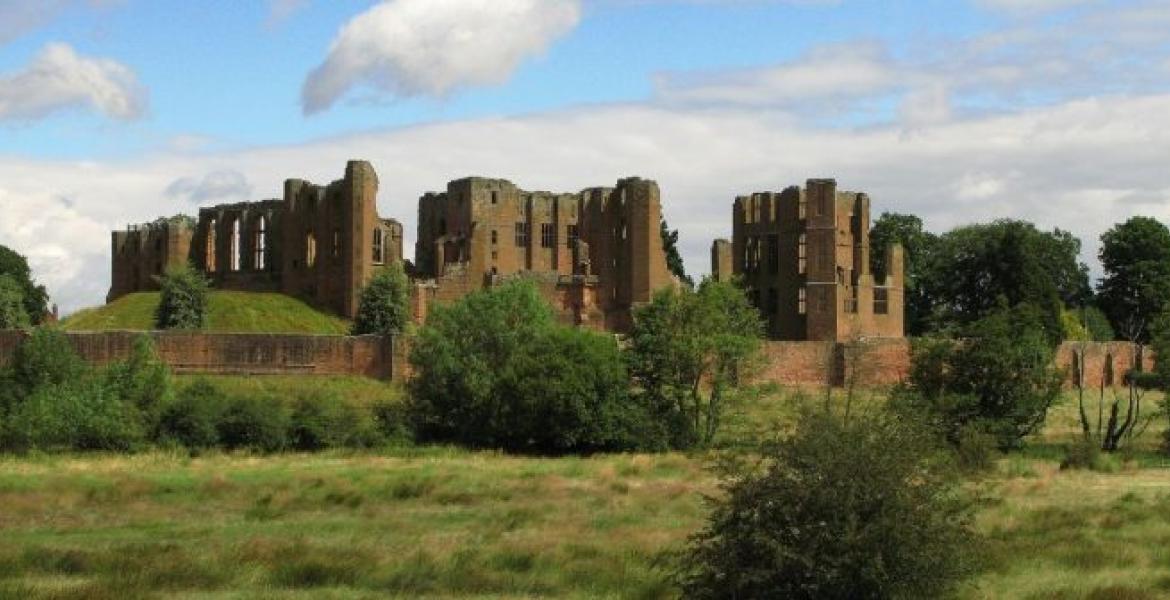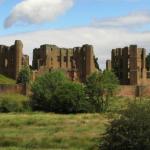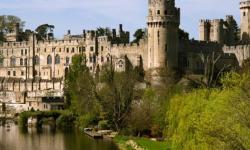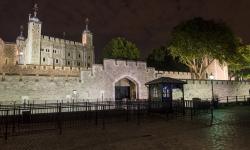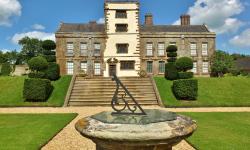Kenilworth Castle, Warwickshire
Being less than seven miles from the popular, Merlin Entertainments-owned Warwick Castle, Kenilworth Castle is often overlooked. This is a great pity. While it doesn't have the flash of Warwick, and is much more ruinous, it is perhaps the more atmospheric of the two.
Initially built as a Norman castle in the 1120s for Geoffrey de Clinton, a favourite of Henry I, Kenilworth Castle became such a strategically-important building that it was taken by the English crown and improved upon by Henry II and King John. From there, it passed into the hands of the rebel Simon de Montfort and was besieged during the Second Barons' WarA civil war, lasting from 1264 until 1267, between Henry III and some of his barons led by Simon de Montfort. Sparked by issues over crown finance and government, it it became a struggle between the power of an absolutist king and the rights of his barons.. Upon its surrender it was given to Edmund, 1st Earl of Lancaster, and it remained in LancastrianOf, or a follower of, the House of Lancaster during the Wars of the Roses; or someone/thing from Lancashire. hands for the next 200 years. The castle and its grounds were used for all sorts of activities associated with the top rungs of medieval society, including displays of chivalryA knightly code of correct social, religious and moral behaviour., such as jousting competitions and tournaments. It also acted as prison for Edward II during Isabella of France and Roger Mortimer's seizure of power in 1326-7 and was the place where Edward was finally bullied into abdicating. Later in the 14th century one of the richest – and most hated – men in England, John of Gaunt, made major additions to the castle possibly to appease his wife, Blanche of Lancaster. After Henry Bolingbroke, Gaunt's son, seized power in 1399, the castle became a favourite of the Lancastrian kings and it was here that Henry V received the insulting gift of tennis balls They suggested that he was not a man, but a boy, who deserved boys' toys. from the French king which might have prompted the military campaign that led to Agincourt. It remained in royal hands after the Wars of the RosesA series of conflicts, during the second half of the fifteenth century, between two branches of the Plantagenet line: York and Lancaster. Over the course of 30 years the crown passed through several hands: Henry VI, Edward VI, Edward V, Richard III, and Henry Tudor. Most historians date the end of the Wars to Henry VII's victory at the Battle of Bosworth Field, although it can be argued that they actually finally finished during the sixteenth century. and in 1553 was granted to John Dudley who famously was executed for his role in the accessionThe attainment or acquisition of a position of rank or power, often related to the throne. of Lady Jane Grey. Thereafter it was granted to his son Robert Dudley, a great favourite of Queen Elizabeth, who made substantial improvements to it – including the commissioning of the Elizabethan garden – as a way to woo the queen. It was captured by the ParliamentariansPeople supporting parliament in the civil wars; or members of parliament, particularly those who are knowledgeable about politics. during the Civil Wars and was slighted in 1649-50, although the primary dwelling areas were saved.
They suggested that he was not a man, but a boy, who deserved boys' toys. from the French king which might have prompted the military campaign that led to Agincourt. It remained in royal hands after the Wars of the RosesA series of conflicts, during the second half of the fifteenth century, between two branches of the Plantagenet line: York and Lancaster. Over the course of 30 years the crown passed through several hands: Henry VI, Edward VI, Edward V, Richard III, and Henry Tudor. Most historians date the end of the Wars to Henry VII's victory at the Battle of Bosworth Field, although it can be argued that they actually finally finished during the sixteenth century. and in 1553 was granted to John Dudley who famously was executed for his role in the accessionThe attainment or acquisition of a position of rank or power, often related to the throne. of Lady Jane Grey. Thereafter it was granted to his son Robert Dudley, a great favourite of Queen Elizabeth, who made substantial improvements to it – including the commissioning of the Elizabethan garden – as a way to woo the queen. It was captured by the ParliamentariansPeople supporting parliament in the civil wars; or members of parliament, particularly those who are knowledgeable about politics. during the Civil Wars and was slighted in 1649-50, although the primary dwelling areas were saved.
The castle is now in the hands of English Heritage, who sympathetically manage it. There is plenty to do to fill a whole afternoon: all parts of the keep, towers, walls and halls which are safe are accessible; the gatehouse has been furnished with most rooms representative of Tudor decoration; there is an Elizabethan garden and grounds to wander round; and there are two exhibitions on the castle and its people, and Dudley and Elizabeth. These are interactive, with hands-on activities for children. In addition, there is a shop and a tearoom. English Heritage provide an audio guide, and there is plenty of information around the grounds for those looking for a less structured wander. A guidebook is also available to buy, which gives more in-depth information about the castle and its history. There is a full calendar of events (some of which are for members only) for both adults and children.
Kenilworth is definitely worth a visit. It is listed as one of the best castles in England According to English Heritage members with good cause, and does its best to ensure all visitors, including children and those with mobility and other difficulties, have a memorable experience. There is so much history, spanning the best part of 900 years, to soak up that it is difficult not to be impressed. The only word of warning would be, don't go on a rainy day!
According to English Heritage members with good cause, and does its best to ensure all visitors, including children and those with mobility and other difficulties, have a memorable experience. There is so much history, spanning the best part of 900 years, to soak up that it is difficult not to be impressed. The only word of warning would be, don't go on a rainy day!
- Log in to post comments

